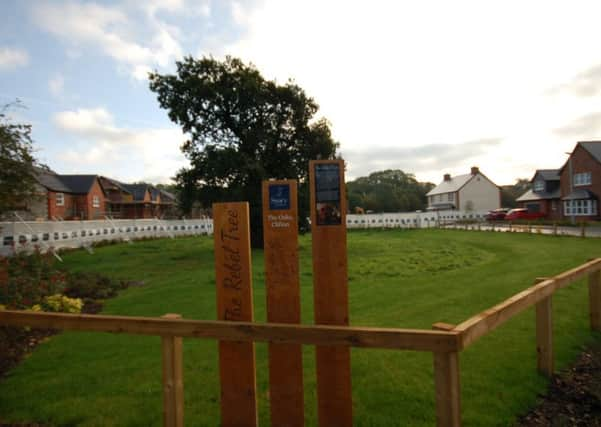Jacobite leader in fight over battlefield roundabout plan


Historian John Black set up a crowdfunding page after the land below the Rebel Tree in Clifton, Cumbria, where around a dozen Scots were killed in the last Jacobite battle on English soil, became a roundabout at the entrance to a luxury housing development. According to one interpretation, the song The Bonnie Banks o’ Loch Lomond is about these very soldiers.
The tree is where the Jacobites were reportedly hanged following the Battle of Clifton on 18 December, 1745, is now at the centre of the roundabout entry to The Oaks, a Story Homes development. Black, from Helensburgh, has called the move a desecration of a war grave.
Advertisement
Hide AdAdvertisement
Hide AdHe is now appealing for Scots and the Scottish diaspora to support his campaign to buy back the land around tree from the developers.
Black is also calling for a Scottish Government agency, such as Historic Environment Scotland, to put up official signage detailing the history, given a recent surge of interest from fans of the television series Outlander.
Set in the Jacobite era, Outlander has sparked renewed curiosity about battle sites featured in the programme and is behind a growth in visitors to Scotland from the US, Canada, Australia and New Zealand.
“Story Homes have put three wooden posts on the roundabout with a brief background to the battle and the Jacobites and named one of their streets Jacobite Gardens. But they don’t mentioned any of it in their sales literature. Nor is there any acknowledgement from any official Scottish organisation,” said Black, leader of the Scottish Jacobite Party who stood as an Independent at the 2013 Dunfermline by-election.
“Ideally I’d like to raise enough money to buy back and bulldoze the luxury homes and turn the site into a battlefield memorial.
“At the very least there should be an appropriate sign compiled by an authoritative historian. This is a Scottish war grave and needs to be respected. It shouldn’t be used as a centre-piece to an upmarket housing estate.
He added: “It used to be a quiet place for reflection which all the clan people visited. That is the sort of dignified atmosphere I’d like to recreate.”
Historian Christopher Duffy in his book The ’45 quoted an account by Jacobite chief Cluny of MacPherson given in the aftermath of the Duke of Cumberland’s occupation of Clifton.
Advertisement
Hide AdAdvertisement
Hide AdDuffy writes: “Cluny Macpherson notes that one sergeant and 12 of his men lost their lives, and the five Jacobite dead who are buried at the southern edge of the village by the ‘Rebel Tree’ are almost certainly members of his clan.
“A number of the bodies were discovered by ‘some frolicsome soldiers’ who ‘dug a deep hole in the ground, and put one of them into it with his feet downwards, and so filled the earth about his body that nothing but his head and shoulders were above the earth, and in that position left him.”
Professor James Hunter, emeritus professor of history at the University of the Highland and Islands, said: “The folk who are campaigning should get in touch with Historic Environment Scotland and see if they can get something done.”
Wardell Armstrong Archaeology carried out a dig of the site near the tree in January 2016, prior to planning application for the housing development being submitted to Eden Council
However, although trenches were dug within 100 yards of the tree and battle artefacts were found, archaeologists were not allowed to dig close to the tree because it has a protection order.
Frank Giecco, the company’s technical director for northern operations, said: “There may well be bodies under the tree, but is impossible to prove without excavation. Because the tree is under protection we can’t go anywhere near.
“If there are bodies under the tree, they are now protected under it.”
Adam McNally, land manager for Story Homes, said: “The site is called the Oaks, after the large oak tree, also known as ‘The Rebel Tree’, which forms a striking entrance to our development.
Advertisement
Hide AdAdvertisement
Hide Ad“It is said this tree marks the graves of Jacobites killed in a skirmish of 1745 between the English forces of the Duke of Cumberland and the regiment that served Bonnie Prince Charlie. We have sensitively designed the development to protect the tree and erected interpretation boards with approval from the local bodies.”
A spokesman for Historic Environment Scotland said the site was outwith their remit but staff would be happy to advise on wording for a sign marking the history.
“If the campaigner wants to install any kind of memorial then it will be up to them and the local authority to decide on what form that might take.”